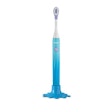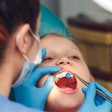
NEW YORK (Reuters Health) - Many specialties perform pediatric procedural sedation with no differences in major complication rates, according to findings published online today in Pediatrics.
Intensivists, emergency medicine physicians, radiologists, and hospitalists, among others, have increasingly been providing pediatric sedation, but whether complications are more or less associated with any particular group of specialists has been unclear.
Dr. James H. Hertzog from Alfred I. DuPont Hospital for Children, Wilmington, Delaware, and colleagues in the Pediatric Sedation Research Consortium investigated that question using data from 38 sites on patients who ranged in age from newborn to 18 years. The research team defined major complications as aspiration, death, cardiac arrest, unplanned hospital admission or level-of-care increase, or emergency anesthesiology consult.
Out of 131,751 cases of sedation given outside of the operating room, there were no deaths, and other major complications were rare (122 total).
Sedation was most often administered by intensivists (58,222), emergency physicians (38,293), anesthesiologists (18,343), and pediatricians (12,113). Children were also sedated by pediatric residents or fellows, radiologists, surgeons, dentists, advanced practice nurses, certified registered nurse anesthetists, or registered nurses.
There was no statistical difference between providers' major complication rates either before or after adjustment for possible confounding variables.
Moreover, there was no significant difference between the types of major complication among providers.
"The rapid growth in the use of sedation services by nonanesthesiologists has been the subject of some concern," the researchers conclude. "Our data reveal that, within our consortium, there was no increased danger associated with pediatric procedural sedation provided by nonanesthesiologists."
"The application of our data to sites outside of our consortium will require rigorous evaluation of the skill level of the providers and the institution's systemic safeguards for the care of a sedated pediatric patient," they caution.
Source: https://bit.ly/ggVsDk
Pediatrics 2011;127:e1154-e1160.
Last Updated: 2011-04-25 14:56:07 -0400 (Reuters Health)
Copyright © 2011 Reuters Limited. All rights reserved. Republication or redistribution of Reuters content, including by framing or similar means, is expressly prohibited without the prior written consent of Reuters. Reuters shall not be liable for any errors or delays in the content, or for any actions taken in reliance thereon. Reuters and the Reuters sphere logo are registered trademarks and trademarks of the Reuters group of companies around the world.



















